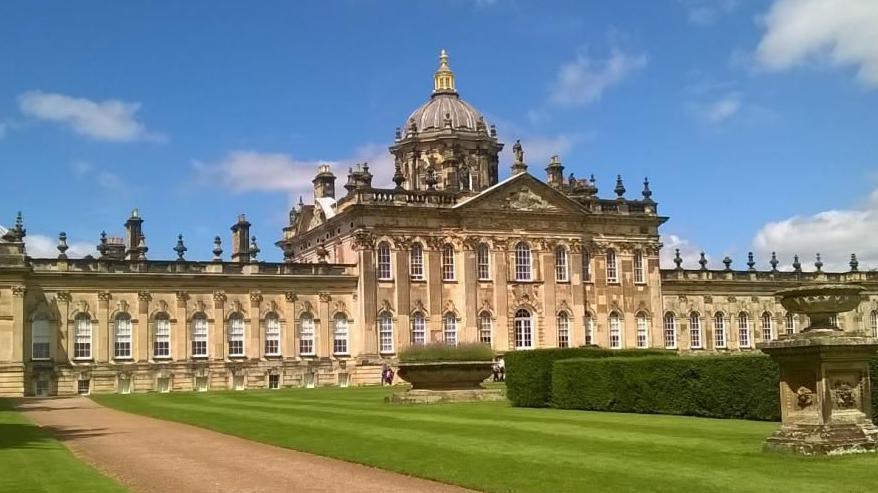Rewilding project could see beavers return to estate

Castle Howard has been open to the public since 1952
- Published
A rewilding programme at a country estate could see the reintroduction of beavers and an increase in bats, turtle doves, bees and butterflies as part of a biodiversity scheme.
Castle Howard in North Yorkshire has turned 5% of its 9,000 acres into a habitat bank, which will allow organisations that want to offset their carbon footprint or are required to meet biodiversity targets to buy “nature credits”.
Castle Howard estate chief executive Jasper Hasell said the scheme would see 440 acres of low-yielding farmland returned to nature.
He said: “We’ve designed a habitat management plan over the next 30 years, starting with early interventions such as woodland areas that need thinning to allow native species to thrive.”
The stately home near York - one of the sets for Netflix show Bridgerton - is working with biodiversity unit provider Environment Bank on the scheme at Bog Hall Habitat Bank.
Part of the area had already been designated as a Site of Importance for Nature Conservation, but under the scheme the Environment Bank said Castle Howard could see a 250% increase in bat numbers due to more insects and a 140% rise in bees and butterflies.
A low-density grazing herd of cattle and pigs will “make sure it doesn’t go back to trees but becomes an open area of scrub”, said Mr Hasell.

Bog Hall farm on Castle Howard estate has been designated for the rewilding project
According to Environment Bank, the “boggy terrain” makes Bog Hall “extremely valuable from an ecological perspective”.
Mr Hasell said: “We have an area of land called Bog Hall for a reason. It was once a bog before humans came along to use it for farming.
“The land has been farmed in the last 50 years.
“We know how much was put into the land and how much output was created and it required much more input in terms of diesel and run off of fertiliser and chemicals, and you get low yields of the land.”
In February this year, biodiversity offsetting was introduced into the planning process across England.
To gain planning permission, developers must demonstrate a 10% net gain in biodiversity. This has led to schemes such as Environment Bank.
The project at Castle Howard is designed to support both organisations that need to meet a statutory Biodiversity Net Gain requirement and those who want to contribute voluntarily, but it is primarily focused on the voluntary market.
Mr Hasell said he would like to work with other Yorkshire organisations on the off-setting project at Bog Hall.
He said: “It would be lovely to partner with well-known Yorkshire brands not just corporates but also universities and public organisations.
“And being locals means they can come and see it.
“We don’t want people to just buy a credit and have it sitting in an office. We want them to come and see it.”
Stately home Castle Howard is a private residence and has been home to the Howard family for more than 300 years.
Construction on the building began in 1699 and it was first opened to the public in 1952. Today it is run by Nicholas and Victoria Howard.
Nicholas Howard said: "We know we must take quick and urgent action to combat biodiversity loss and help turn the tide on climate change.
“These plans will ensure we create a positive legacy for our local communities and the wider environment in which they live, securing the future of the Estate for generations to come."
Listen to highlights from North Yorkshire on BBC Sounds, catch up with the latest episode of Look North or tell us a story you think we should be covering here, external.
Related topics
Related stories
- Published18 January 2024

- Published16 January 2024
